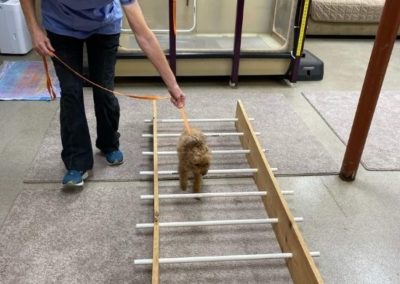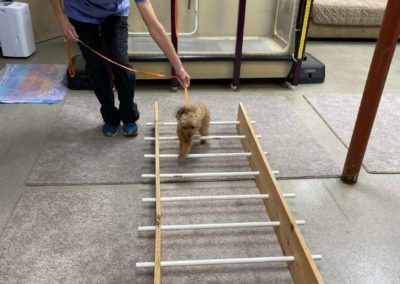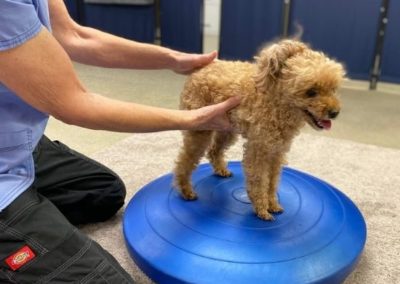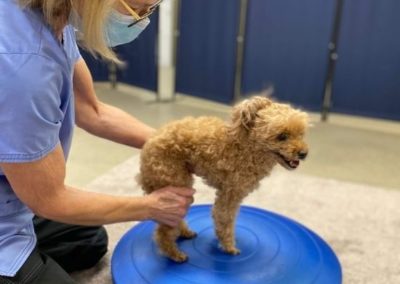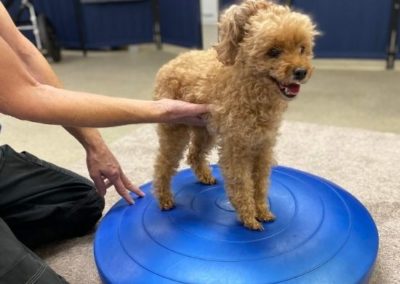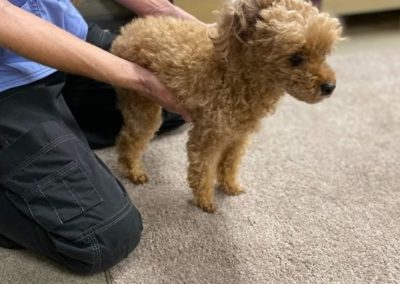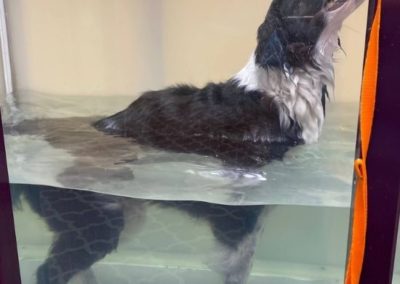Pet Physical Rehab
Read below to learn more Brunswick Veterinary Clinic’s Pet Physical Rehab.
Pet Physical Rehab
What Is Physical Rehabilitation?
Physical rehabilitation for pets is about applying the basic principles of physical therapy to help increase mobility, function and the overall quality of life of your pets. While there are different forms of physical therapy, the most common options from your veterinarian include exercise and massage to afflicted areas.
Conditions Physical Therapy Helps
Physical therapy helps many different conditions in your pet, including:
• Postoperative cranial cruciate ligament recovery
• Head and neck conditions
• Spinal cord diseases
• Osteoarthritis
• Joint and muscle pain due to obesity
Available Forms of Physical Rehabilitation
At the Brunswick Vet Clinic, our veterinary staff members offer several different forms of physical therapy at our animal hospital to meet your dogs’ needs. This includes the latest innovations that are currently available.
Underwater Treadmill Hydrotherapy
Hydrotherapy uses water as a tool to improve muscle tone and mobility in pets. The water helps your pet use a variety of muscles while minimizing stress on the joints. This also helps to build muscle and endurance to support localized injuries and to help them heal faster. Hydrotherapy is commonly used to treat cruciate ligament injuries and break repairs.
Cavaletti Rails
Cavalettis are small jumps made from wood that is commonly used in horse training. Occasionally, this method is used to encourage joint motion and to help strengthen all limbs after an injury.
Balance Balls
Balance balls help a dog rebuild muscle and improve overall conditioning. This method of physical therapy is often fun and enjoyable for your pet. The balls often have a flat bottom that sits securely on the ground while the dog maintains balance on top of the curved surface.
Pet Cold Laser Therapy
At the Brunswick Veterinary Clinic, your pets are part of our family, too. We believe they deserve the best possible chance at health and happiness, especially if they’re living with pain or mobility problems. That’s why our vets stay up-to-date on the latest advances in diagnosis, treatment and pain therapy for pets, including an innovative therapeutic technique called cold laser therapy. If your dog or cat is experiencing pain, inflammation or slow healing of any kind, then this therapeutic technique can be beneficial.
What Is Pet Cold Laser Therapy?
Also known as low-level laser therapy, cold laser therapy is a non-invasive method of harnessing the healing power of laser light. At low levels, laser light provides just enough stimulating energy to increase blood flow, encourage the production of pain-killing chemicals and promote the creation of new tissue cells.
What does that mean for your pet? During a pet cold laser therapy session, a laser therapy technician will use a handheld device to send light rays directly into your pet’s body. For example, when dogs receive cold laser therapy for knee pain, the laser wand is held directly over their knees. Sessions may last anywhere from three to 10 minutes, depending on treatment needs.
Pets of all ages and backgrounds benefit from cold laser therapy because this all-natural therapy option provides relief from many different symptoms and conditions. At the Brunswick Veterinary Clinic, we use pet cold laser therapy to treat cats our feline and canine patients for:
• Generating New Tissue
• Providing Pain Relief
• Reducing Inflammation
• Promoting Blood Flow
• Speeding Up Healing Time
Of course, these benefits can be applied to many different injuries, conditions and causes of chronic or acute pain. If your pet is in pain for any reason, we recommend a consultation with our laser therapy vet. Here are some of the most common conditions that our veterinary team uses cold laser therapy to treat:
Muscle Strains and Sprains: Whether your pet’s tissue injury was acute or chronic, cold laser therapy can promote blood flow and reduce swelling to speed up the regrowth of new tissue.
Neck and Back Pain: Pain relief is often an immediate side effect of cold laser therapy, especially pain related to irritated discs.
Osteoarthritis: As joints lose cartilage and irritation increases, arthritic joint pain and mobility problems are common, but pain can be reduced with cold laser therapy.
Degenerative Disc Disease: Cold laser therapy may help delay the progression of this age-related disease, which leads to disc loss that causes pain and irritation for your pet.
Surgery Recovery: Using a laser wand, our doctors can stimulate tissue and promote the healing of incision sites.
Gingivitis: This painful gum condition causes swelling and pain that may respond to cold laser therapy.


